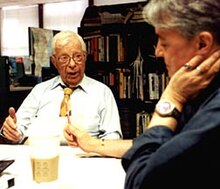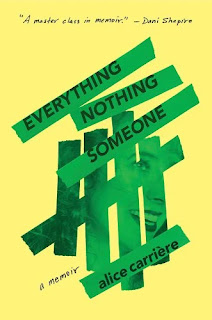.jpg) |
Photo by Lisa Damico
|
Jean Meltzer is the author of the new novel Kissing Kosher. Her other novels include The Matzah Ball. She lives in Virginia.
Q: What inspired you to write Kissing Kosher, and how
did you create your characters Avital and Ethan?
A: In 2020, smack dab in the middle of the pandemic
and right around the same time I learned that The Matzah Ball was going to be
published, I woke up with what I thought was a urinary tract infection.
Three doctors and eight rounds of antibiotics later, I
knew that what I was experiencing was no simple UTI. My journey with chronic
pelvic pain had begun. Once again, I found myself having to maneuver the
medical system in order to find relief.
It was not an easy process. Most of all, because chronic pelvic pain—like the
sexual dysfunction and intimacy issues that come with—is so rarely talked
about. And yet, when I did talk about it, the most interesting thing would
happen. Someone would lean into me and whisper, “Me too.”
I knew that I wanted to write a book about chronic
pelvic pain and sexual dysfunction. I wanted to give voice, and visibility, to
this thing so many people struggle with, but rarely feel comfortable talking
about.
Q: The Kirkus Review of the novel says, in part, “Meltzer’s
latest novel follows a vulnerable, authentic journey about learning to navigate
pain of all dimensions—individual and generational—and the boundaries people
can set for themselves while also advocating for others who might not be
capable of speaking up for themselves.” What do you think of that description?
A: I love it. While I was writing this book, I was
still very much processing my own experience, fear, and grief around becoming a
chronic pain patient. In addition, my father died. As a society, we tend to
think about “pain” like we think about disease. Something that exists on a
binary, that either gets better, or goes away entirely.
But pain can be both emotional and physical. And so
many of us—whether we’re consciously aware of it or not—live with chronic pain
in some form.
Books don’t just change their readers. They change the
people writing them, too.
What I learned from going on this journey with Avital
and Ethan—in addition to research and study I did regarding kosher sex and
Jewish intimacy—is that boundaries are a part not only a part of our Jewish
tradition, they are fundamental to building safe and intimate love, despite the
pain we carry. When one feels safe to advocate for themselves, they can
advocate for others, too.
Q: Why did you decide to set the story in a bakery?
A: George Hartman once wrote, “The Jewish imagination
developed in the sphere of the Hebrew Bible,” and I certainly find that to be
true in my books. I can’t separate out my creativity, the tales my brain concocts
each book, from the stories I was raised with. That includes midrash, Jewish
law, holidays, text sources, as well as Jewish thinkers and philosophers.
One of the best tales from our tradition that explores
women, sexuality, and the boundaries we erect comes from our holiday of Purim.
Purim celebrates the story of Queen Esther, a woman who saved the Jewish people
from annihilation at the hands of an evil man named Haman during the Achaemenid
Empire.
Every year, we recount this story. We eat hamantashen,
triangle-shaped cookies, stuffed with jams, reminiscent of the triangle-shaped
hat that Haman wore. But also, and perhaps more relevant to Kissing Kosher, there
is early evidence that these cookies represented sex and fertility. Hence their
very womb-like shape.
It just made sense to have Kissing Kosher be set in a
bakery, and lead into the holiday of Purim, and for Ethan to have hamantashen
be his signature cookie that he eventually feeds to Avital. Indeed, our sages
teach: “Purim is when we take the masks off.” Kissing Kosher is very much a
story about revealing ourselves to another person in the most intimate and
vulnerable ways.
Q: How would you describe the dynamic between Avital
and Ethan?
A: Wow. What a great question! I freely admit that the
books I write are often chronic disability romantic fantasies. Meaning, I write
stores for women like myself—women who occasionally need caregiving—women who want
to be safe, and know that they are loved and values, even when they can’t get
out of bed.
But I think it’s too simplistic to look at Ethan as a
protector, safeguarding Avital physically, and Avital as the nurturer,
cultivating Ethan emotionally.
In all relationships, there needs to be balance. There
needs to be give and take. And so, what I hope people come to see in Kissing
Kosher is that Avital and Ethan take turns being the person the other one needs
in the moment.
That, to me, is the essence of a healthy and whole relationship.
Two people who are not necessarily perfect, but who despite their weaknesses,
work hard at being better together.
Q: What are you working on now?
A: I’m pleased to tell you that my fourth book,
Magical Meet Cute, will arrive August 2024.
Magical Meet Cute is about a proud Jewitch woman and
potter named Faye Kaplan, determined never to fall in love again after being
traumatized from a series of toxic relationships, who finds herself the victim
of an antisemitic incident.
Desperate to reclaim her power—and after two bottles
of wine—she heads to her pottery studio and crafts a man out of clay, etching
all her desires for a guardian and protector, friend and lover, onto his skin,
before burying the doll in her backyard.
When a handsome and mysterious stranger arrives to
town the very next day, and checks every box scribbled on her clay man’s
belly—including the most esoteric ones—Faye is left wondering if she’s looking
for reasons to avoid falling in love, or if she’s inadvertently summoned a
golem.
I'm also THRILLED to tell you that I am, once again,
writing a Hanukkah romcom!!! While I can’t go into too many details just yet,
my fifth book will publish in 2025, and coincide with the five-year anniversary
of The Matzah Ball.
I’m so excited to bring Magical Meet Cute and another
holiday romance into the world. Both books are so special, and unique, and I
truly cannot wait to share them with my readers!
Q: Anything else we should know?
A: I absolutely love connecting with readers, and schmoozing over all things
romance, books, Judaism, chronic disability, and Siberian huskies.
You can find me on Instagram: JeanMeltzer or Facebook:
JeanMeltzerAuthor. Or, check out my website: www.jeanmeltzer.com, where you can
send me a message and sign up for my newsletter. Otherwise, thank you all for
reading my books. And your support!
--Interview with Deborah Kalb. Here's a previous Q&A with Jean Meltzer.
.jpeg)







.jpg)

.jpg)






